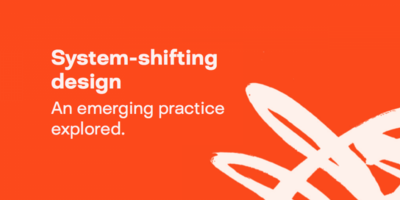The University of Liverpool

The University of Liverpool's Department of Physics turned to Design Council to help them achieve recognition, forge partnerships and win funding.
Background
The Department of Physics of the University of Liverpool has a worldwide reputation for cutting-edge research. Its staff, for example, work on high-profile projects such as LHCb, one of seven particle physics detector experiments collecting data at the Large Hadron Collider at CERN.
Through their work with the AGATA project, another high-profile international project in nuclear physics, the university’s researchers identified commercial potential to develop an array of portable nuclear detectors that could be used for a variety of applications. These mobile units would be able to produce fast, real-time imaging and data processing in a 3D format.
Investing a little time and effort on design upfront to visualise an idea... puts you in a strong position to find the partners you need.
David Raffo, Design Council Design Associate
To progress their idea, they needed to attract partners and funding, for which it was essential that the team were confident in understanding who their users were and be able to visualise the product’s design and user journey.
“We had a working prototype – a box of electronics and clever physics. But it was something only physics specialists could understand,” said Marco Palumbo, IPS Commercial Development Manager for the University’s Department of Physics.
At this time, the university had identified possible end-users such as police forces, the military or emergency and rescue teams around the world and so a main concern was finding a better way to engage such potential users, and then shape the development of the product accordingly.
“What we needed was a better way of communicating what it could do more effectively, to non-specialists”, Palumbo explained. To help them achieve that, the university applied for Design Council coaching and began working with Design Associate David Raffo.
What We Did
David introduced the team to a design-led approach to commercialisation involving iterative, user-led design. He reviewed the project then worked with the team to help them refine potential applications and users, and to agree a roadmap for developing concepts before creating a prototype to test both the user and business case.
“Investing a little time and effort on design upfront to visualise an idea, its potential uses and routes to market, puts you in a strong position to find the partners you need – because the idea is there for them to see” said David. “It also gives you more leverage when talking to other parties down the line.”
You always get better feedback when people can see a physical representation of an idea, and a model can also build confidence among potential stakeholders.
Andrew Pawson, Director, 257
As part of David’s work with the team, a decision was taken to work with an external design agency to visualise the product idea. This would enable the team to communicate the idea and the vision behind it to potential funders and commercial partners. Through a process led by David, design agency 257 in Manchester was chosen to take on this task.
“We began by learning about the technology – understanding what it was, how it worked, and how it would benefit the end user,” said Andrew Pawson, Director at 257. “We considered how potential users might use the product then how the technology should be packaged to make it usable.”
After initial research, the designers developed different concepts to test ideas and approaches before refining these into one single concept. “Making the technology accessible was key,” explained Andrew.
The designers produced visualisations of the concept including a series of CAD-based treatments and a presentation model.
“Sketches are great for early concept ideas, but CAD is best to accurately convey a sense of proportion and scale,” added Andrew. “The presentation model was for the team to take out to discuss. You always get better feedback when people can see a physical representation of an idea, and a model can also build confidence among potential stakeholders.”
Results
With greater clarity of vision and improved communication, the team secured additional funding.
The support of the Design Associate and involvement of designers helped the university team open conversations with potential partners. With greater clarity of vision and improved communication, the team also secured additional funding to start work on user-specified modifications which are now close to completion. The next step will be further trials using a full, working prototype.
“Physicists and engineers tend to think design is only for packaging once the important work has been completed,” said Palumbo “The design process we were introduced to enabled us to strip down the project to the basics and then rebuild it with a focus on the fundamental scope and use of the technology, and what we really needed to communicate about it.”
The design process we were introduced to enabled us to strip down the project and then rebuild it with a focus on what we really needed to communicate.
Marco Palumbo, University of Liverpool
By exploring with an external designer the product’s potential volume space, weight, ergonomics and data output, the team gained a greater understanding of how to communicate its benefits. “This was important as it is critical to understand user preferences in order to further refine an idea,” he added.
“Meaningful engagement with the end user is probably the main obstacle you face in technology transfer. We thought design could help us engage with users and companies we could potentially partner to understand their requirements and better communicate our selling points. With our Design Associate’s help, that’s just what it did.”
Subscribe to our newsletter
Want to keep up with the latest from the Design Council?

